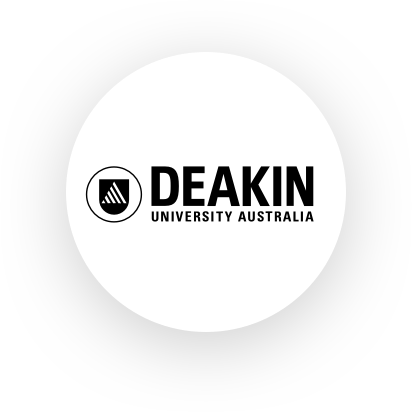20k students using DeakinSync
200 apps integrated
Australia’s tertiary education sector is being challenged on many fronts. Uncertainty due to changing funding models, increased competition for students among public and private institutions, and the arrival of the digital economy are causing many to rethink how they go to market. At Melbourne’s Deakin University, Chief Digital Officer (CDO), William Confalonieri, is responding by creating an innovative, integrated digital landscape that is transforming the way students, academics, administrative staff and the local community interact.
Challenge
Confalonieri is under no illusions as to the nature of the challenge ahead for Deakin. “We’re facing big disruption. The digital economy is going to change our business in many aspects. Certainly the current wave is already changing business processes, the way we work and create, and it is changing our business model. We know that we will need to continue to react and become even more proactive if we want to play a central role in the still-forming, digital landscape in the education sector.”
Confalonieri’s title — Chief Digital Officer — reflects the University’s acknowledgement that in the digital age, things need to be done differently. Confalonieri’s role encompasses traditional CIO responsibilities such as developing and maintaining efficient platforms to enable business functions, but he also has a wide-ranging brief to embrace the digital disruption, to help the University transform in ways that deliver competitive advantage.
“For all stakeholders, but particularly for students, we want to deliver powerful, simple, compelling, delightful digital experiences. This is going to be the key factor for any organization looking to claim a really strong position in the market. Today’s students are digital natives. They’ve grown up with technology so we need to be able to tell compelling stories digitally, across all touchpoints,” he explains. One of the cornerstones of Confalonieri’s strategy is DeakinSync, a personal portal for all individuals within the Deakin community, providing access to relevant University resources, customized to the each person’s specific needs.
“The idea of the platform is to create an ecosystem that will give students and other stakeholders everything they need to interact with the University during their studies and beyond. The platform will respond to every person differently based on the need and the context of the situation, such as their geographic location, their life situation. As the system learns and improves, the quality of personal interaction and stakeholder satisfaction will increase,” Confalonieri explains.
Crucial to this vision is the ability to pull in information from almost 200 applications used across the University, including Deakin’s learning management system, student management, human resources, finance and customer relationship management systems.
Solution
“Without a very effective integration layer, this was not going to be possible. So our first task was to understand how to solve the integration puzzle,” Confalonieri notes. “We had been using point-to-point integration. Now we needed something far more dynamic and effective.”
Confalonieri and his team looked at a number of options before selecting MuleSoft’s Anypoint Platform. They selected Anypoint Platform because the solution offered pre-built connectors, integration templates and drag-and-drop tooling to ease the task of connecting applications.
“When we went through the selection process, we were looking for a combination of things. We wanted a platform that would be agile, cost-effective and powerful. MuleSoft certainly ticked all those boxes,” Confalonieri admits.
Aware that his team would require external assistance given the size of the integration project, Confalonieri also engaged MuleSoft partner, Sixtree. “We found that with the combination of Sixtree and MuleSoft, we have been really able to develop the platform we were looking for.”
Results
With this project Deakin has seized on the opportunity to position itself as a technology leader by streamlining the digital experience of its students, an experience it hopes they will endorse to their friends and peers.
The first stage, carried out in 2013, focused on integrating the systems essential for meeting everyday student requirements, including a variety of mid-size applications and the learning management and student management systems. By end of year the portal was ready, and Confalonieri’s team began gradually rolling it out to the student body.
Six months later, almost 20,000 students are using DeakinSync to book meeting rooms, top up their student cards, create and share documents, follow news on selected people and topics, access health services, accommodation information or look at the library, all within a seamless digital environment accessed via a single sign-on. If any changes are made to the system or an additional system is integrated with the platform, students experience no interruption and continue to have a seamless experience with DeakinSync. By year end, Confalonieri is confident the roll-out will be complete and all 50,000 of Deakin’s students will have access to the hub.
“The students love it because their experience is completely different,” Confalonieri says. “They have everything they need in one portal. They don’t need to navigate complex systems or switch between platforms any more. It’s all there in front of them.”
Over the next two years, the project will continue to integrate the systems necessary to provide personalized experiences for Deakin staff, alumni, prospective students and community members. DeakinSync provides the best learning experience to students and its success contributes to the fact that 95% of graduates from Deakin University find full time employment after graduation, which is higher than the national average.
Confalonieri says, “We are working on a vision that will take education to a new level, by providing a seamless learning experience and integrating all learning systems. The project is making some noise in the market and I am frequently approached by peers who want to understand what we are doing. I am confident we are gaining a competitive advantage as students decide which university to attend.”





